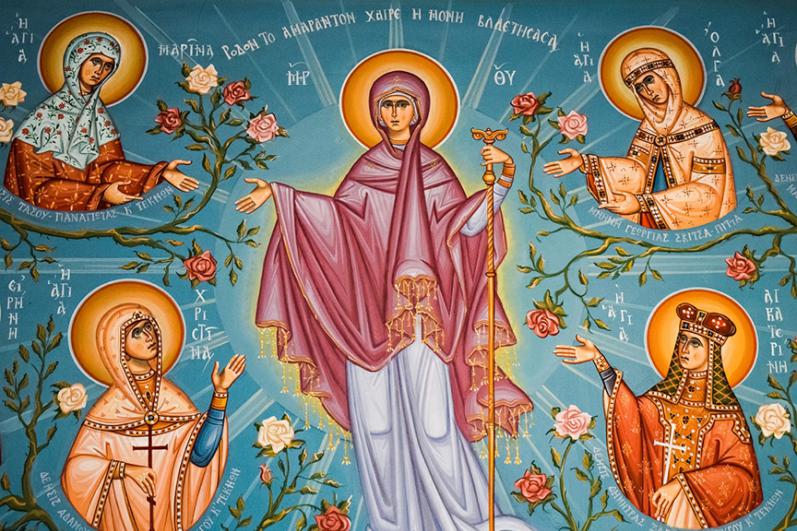Above all the angels and saints
''Blessed be the great Mother of God, Mary most holy," states One of the Divine Praises customarily recited following benediction of the Blessed Sacrament. It acknowledges the most important of the many titles given to the Blessed Virgin Mary.
Our brothers and sisters in the Eastern Churches, both Roman Catholic and Orthodox, have great esteem, devotion, and confidence in Mary above all because of her most important role in the history of salvation -- Theotokos.
These few reflections will begin in the liturgy and then flow to the devotional life of the followers of her Divine Son.
The General Roman Calendar has three solemnities: Mary, the Mother of God (Jan. 1); the Assumption (Aug. 15); and the Immaculate Conception (Dec. 8). This last title is especially dear to Roman Catholics in the U.S. for it is under this title that she is invoked as our national patroness. There are several feasts of Mary throughout the Church's year: the Visitation (May 31); her Nativity (Sept. 8); and in the U.S., Our Lady of Guadalupe (Dec. 12). There are multiple memorials and optional memorials throughout the year; the most recent one Mary, Mother of the Church, added by Pope Francis on the Monday after Pentecost Sunday.
Then there are titles familiar to us mostly by way of the names of parishes or churches or from the Litany of Loreto. Not to be forgotten are all the titles she has because of her appearances, literally across the globe. It would be dangerous to try to list even some of them in each of those categories.
If we scan the names of parishes here in the archdiocese, we see many of her titles: Assumption, Immaculate Conception, Visitation, Gate of Heaven, Help of Christians, Comforter of the Afflicted, Queen of Peace, Queen of Martyrs, Good Counsel, Our Lady of Lourdes, Our Lady of Fatima, and Our Lady of Hope.
In most dioceses of our nation, the Blessed Virgin, under those and many other titles, is the one saint to whose protection more parishes are entrusted than any other. Most of the titles have a particular day in either the General Calendar or in a particular calendar. For those that do not have a particular day or whose title is simply St. Mary, the custom of the Church is that that parish's or church's feast day is the Solemnity of the Assumption.
None of this is probably surprising to you.
If you recite either in a prayer group or privately the rosary, you are already aware of the importance of Mary in the history and mystery of salvation. Of the 20 mysteries of the rosary, all but two of them are biblical events from the entire life of Christ that we call the Paschal Mystery, spanning the Annunciation to the Ascension. In many of those events, Mary was directly and necessarily involved. The two that are not biblical are her Assumption and her coronation as Queen of the Angels and the Saints, the last two of the glorious mysteries.
Looking at art can sometimes help us understand or deepen an appreciation of mystery. More than one person has probably noted that when Mary is presented in painting, fresco, mosaic, or sculpture in the presence of her Son, she inevitably directs us to him. She subtly points to him with her finger; she gazes or glances at him directing our eyes to him with hers. Sometimes she holds him gently -- think of Nativity art and, at the other end, Michelangelo's Pieta.
In addition to art, music and poetry also honor Mary. How many Ave Marias have been composed? Familiar hymns, motets, chants? And how many prayers, some of them particular to an ethnic group, some dear to a family, some recently composed, and some venerable in years.
As far we know, here is the oldest prayer. It is called the "Sub tuum praesidium" from the initial words of the prayer in Latin. "We fly to your patronage, O holy Mother of God; despise not our petitions in our necessities, but deliver us always from all dangers, O glorious and blessed Virgin. Amen." This text is from an Egyptian papyrus of the third century.


















